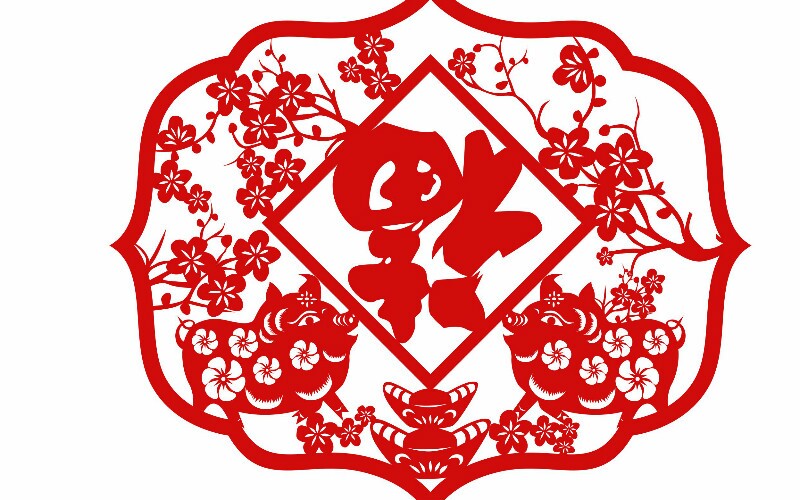Every year before Chinese New Year's Day, people decorate their houses with flowers, pot plants, paper cuttings, New Year door couplets, red lanterns, and New Year pictures, and the fu character (福 'happiness').
Chinese New Year paper cutting is an indispensable part of Chinese New Year decoration. Here is a guide for how to make your own 福 (fu) Chinese New Year paper cutting.
See How to Decorate for Chinese New Year: The Top 7 Decorations.
What You Need
- Red paper — one square of flexible paper
- Pencil
- Stapler
- Sharp scissors and/or craft knife
- Black marker (or other black coloring tool)
Instructions
1. Make sure your red paper is a perfect square shape by measuring it.

2. Fold it three times and crease the edge really well, following the steps below, so that you can make the decorative patterns on the four sides the same.

3. Draw the decorative patterns on the folded paper (remember which part is to be cut or carved off — maybe shading it in). Staple (along the edge that you will cut off) to force the eight layers of paper together tightly.

4. Use your sharp scissors or craft knife to cut off or to carve out the design and create a beautiful decorative pattern. Cut off the stapled edge last. Open it only after the cutting is finished.

5. Rotate the paper by 45° before you draw the 福, so it looks like a diamond. Pencil the outline of the fu character in the middle.

6. Lastly color in the fu character in black, and your Chinese New Year paper cutting is done!


An Upside-Down Fu (福)
Should You Put Your Fu Upside Down?

A 福 (fu) character is a indispensable decoration item for every Chinese family's New Year decoration.
Fu (福) means good fortune, blessing, and happiness. You will see that many Chinese people put their 福 (fu) upside down, no matter whether on the doors or on the windows.
This interesting tradition came from a romantic mistake...
One Chinese New Year's day (the exact year is not known now), a family attached their 福 (fu) upside down as a careless mistake. On the first day of Chinese New Year, their first guest came to visit, and saw the upside-down 福, and kindly shouted to them: "你们的福倒了!" ('Your fu is upside down!').
倒 (dao /daoww/) means 'upside down', but has the same pronunciation as 到 (dao /daoww/), which means 'to arrive'. So "你们的福倒了" could be understood as 'Your fu (blessing) has arrived' (你们的福到了).
People liked the alternative meaning so much that they started fixing their fu decoration upside down to "invoke" an arrival of blessings.


 (10,000+ reviews)
(10,000+ reviews)